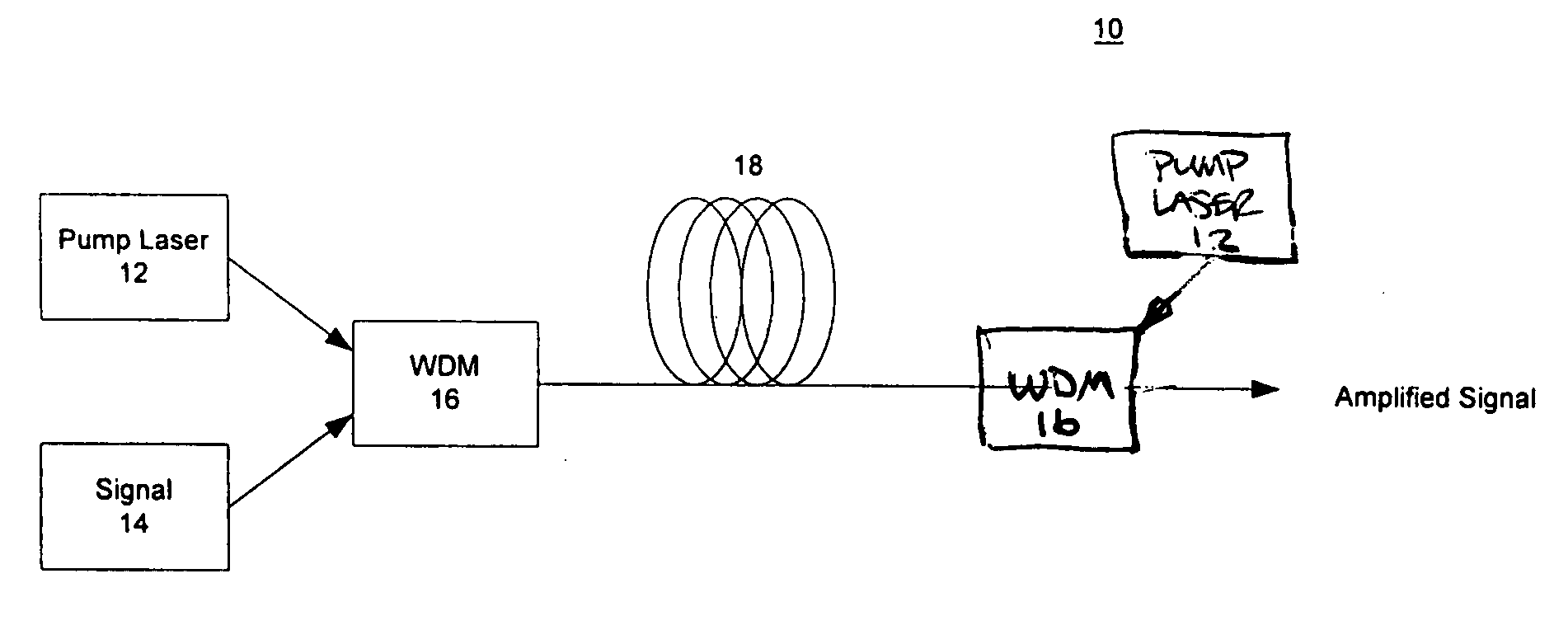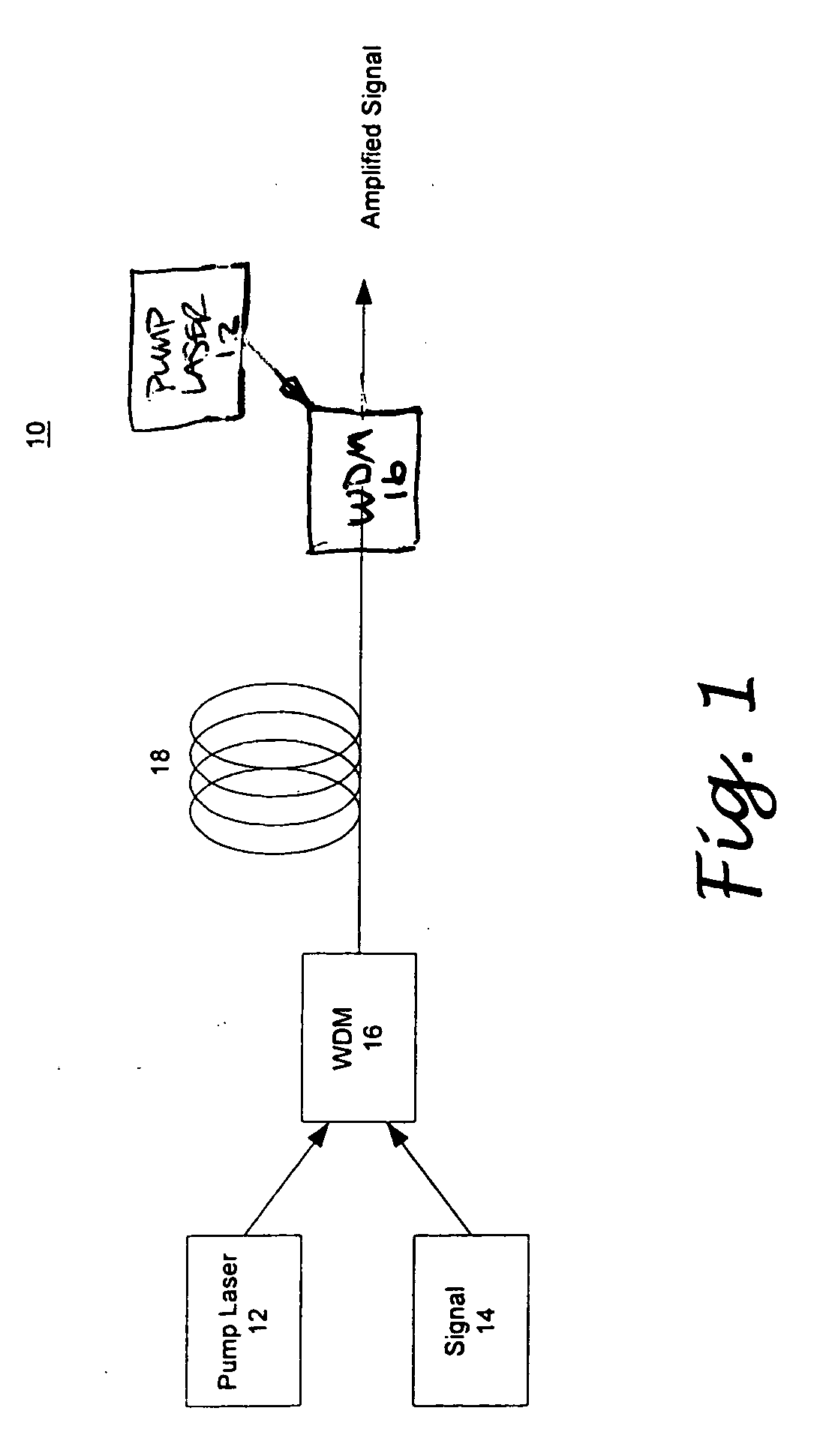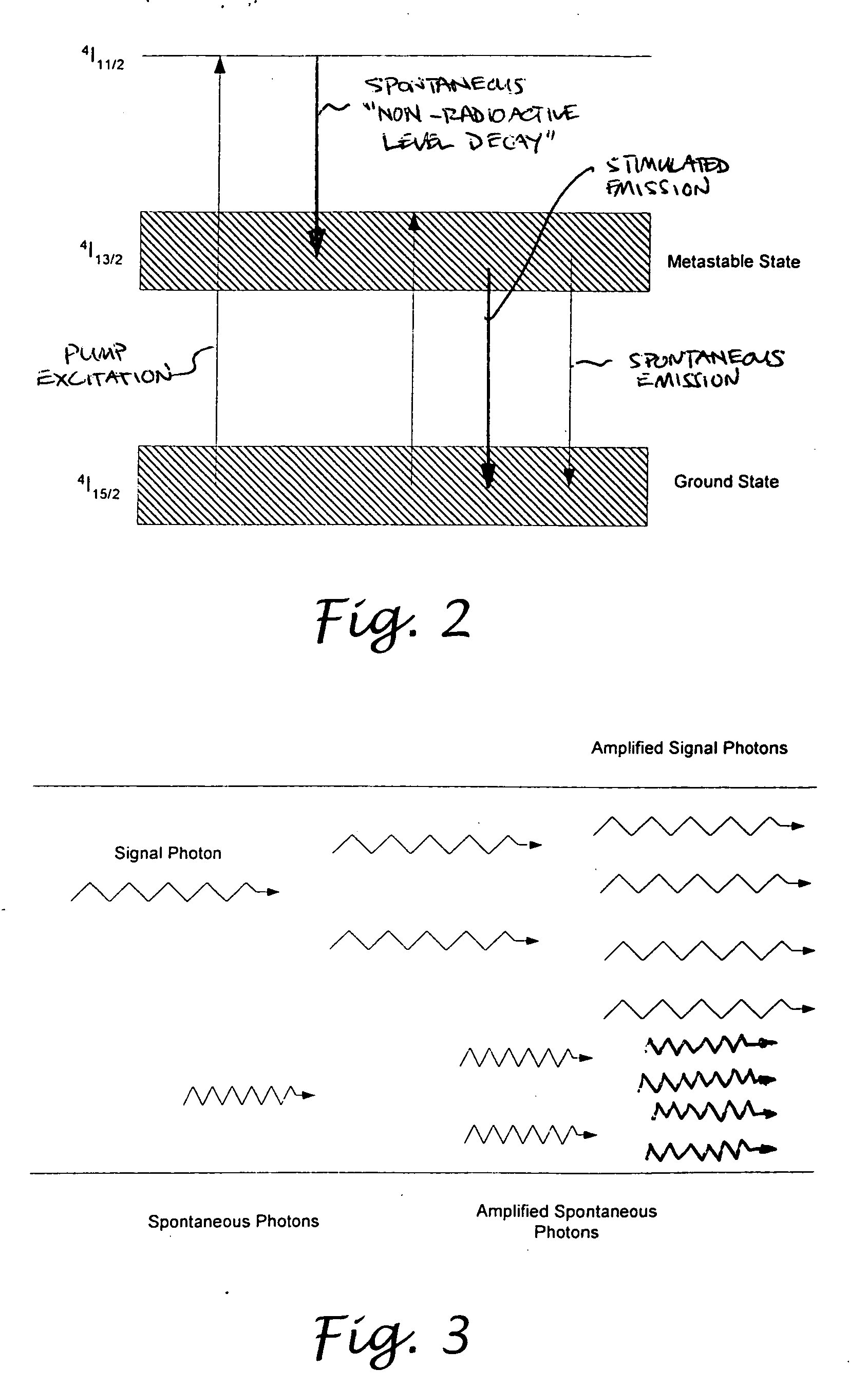High-efficiency, high-reliability fiber amplifier using engineered passband of photonic bandgap optical fiber
a fiber amplifier and passband technology, applied in the field of optical fiber amplifiers, can solve the problems of less reliable operation, high pump power is more expensive to obtain, and a significant portion of the edfa pump energy typically generated by the pump laser is wasted in amplifying noise, etc., to achieve the effect of improving the optical conversion and improving the efficiency of the amplifier
- Summary
- Abstract
- Description
- Claims
- Application Information
AI Technical Summary
Benefits of technology
Problems solved by technology
Method used
Image
Examples
Embodiment Construction
[0019]FIG. 1 provides a schematic illustration of a photonic crystal fiber amplifier 10. As shown, the photonic crystal fiber amplifier 10 includes at least one pump energy source 12, at least one coupler 16, and a length of optical fiber 18. Preferably, the pump energy source 12 includes a pump laser operative to generate a pump beam at a specific wavelength. A signal source 14 is adapted to generate a signal. The coupler 16 includes a wavelength division multiplexer or a conventional optical coupler operative to simultaneously couple the pump beam energy with the signal 14 for transmission from either end of the optical fiber 18. For example, FIG. 1 illustrates that the photonic crystal amplifier 10 can also be provided in a dual-pump 12 version. The photonic optical fiber 18 is doped with a gain medium such as erbium, ytterbium, thulium or other rare earth ions.
[0020]FIG. 2 illustrates the energy-level transition in erbium. As shown, there are three energy levels in the amplifica...
PUM
 Login to View More
Login to View More Abstract
Description
Claims
Application Information
 Login to View More
Login to View More - R&D
- Intellectual Property
- Life Sciences
- Materials
- Tech Scout
- Unparalleled Data Quality
- Higher Quality Content
- 60% Fewer Hallucinations
Browse by: Latest US Patents, China's latest patents, Technical Efficacy Thesaurus, Application Domain, Technology Topic, Popular Technical Reports.
© 2025 PatSnap. All rights reserved.Legal|Privacy policy|Modern Slavery Act Transparency Statement|Sitemap|About US| Contact US: help@patsnap.com



